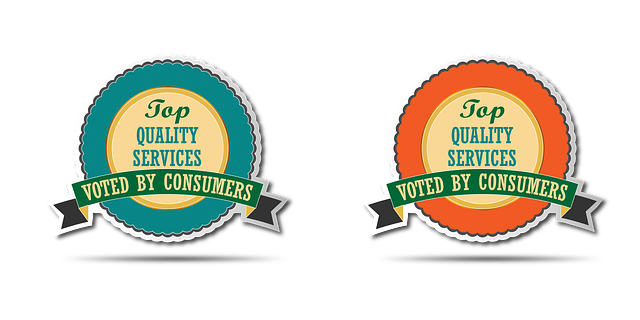Deeply understand your target audience's buyer's journey through market segmentation and channel selection for personalized marketing. Set clear goals for each stage of the sales funnel to measure success and optimize. Create compelling content and offers tailored to audience needs, leveraging automation tools for personalization. Optimize strategies with A/B testing to enhance conversion rates and improve customer journeys. Post-purchase engagement through targeted communication builds loyalty and client retention.
Building high-converting sales funnel strategies is a cornerstone of successful marketing in today’s digital landscape. By understanding your target audience and their buyer’s journey, you can tailor each stage of your funnel with clear goals. Creating compelling content and offers drives engagement, while A/B testing optimizes conversion paths. Post-purchase, nurturing leads and building relationships ensures repeat business and fosters brand loyalty. Implement these strategies to enhance your sales funnel effectiveness.
- Understand Target Audience and Buyer's Journey
- Define Clear Goals for Each Funnel Stage
- Create Compelling Content and Offers
- Optimize Conversion Path with A/B Testing
- Nurture Leads and Build Relationships Post-Purchase
Understand Target Audience and Buyer's Journey

Before designing any sales funnel strategies, it’s crucial to have a deep understanding of your target audience and their buyer’s journey. This involves segmenting your market to identify key demographics, psychographics, and behavioral patterns that influence purchasing decisions. By knowing your audience intimately, you can tailor marketing messages, choose the right channels (like social media, email, or WhatsApp marketing), and create content that resonates with them at each stage of their path to purchase.
For instance, automation tools can streamline this process by gathering data, personalizing communications, and providing timely reminders or offers through text message marketing campaigns. By aligning your sales funnel with the buyer’s journey, you enhance customer engagement, build trust, and increase the likelihood of conversions.
Define Clear Goals for Each Funnel Stage

Setting clear goals is pivotal to constructing effective sales funnel strategies. Each stage of a sales funnel should have well-defined objectives that align with your broader business aims. For instance, the top of the funnel (TOFU) might focus on increasing brand awareness and generating leads through compelling content or targeted social media marketing automation campaigns. As prospects move further down the funnel, goals shift towards nurturing those leads, such as encouraging sign-ups for newsletters or downloading free resources that showcase your expertise.
Well-defined goals allow you to measure success accurately and optimize your sales funnel strategies over time. With robust metrics in place, you can assess whether your efforts are driving conversions effectively. Leveraging tools like email marketing platforms for personalized communication and automation sequences further enhances this process, enabling you to nurture leads more efficiently and increase the likelihood of successful sales conversions.
Create Compelling Content and Offers

In the realm of sales funnel strategies, creating compelling content and offers is a game-changer. The key is to understand your target audience’s pain points and desires, then craft messages that resonate with them. Utilize various formats—from blog posts and videos to infographics—to keep your audience engaged and informed. Offers, whether they’re discounts, free trials, or exclusive content, should be designed to add immediate value, encouraging prospects to take the next step in your funnel.
Leverage powerful tools like social media marketing automation and AI chatbots to enhance your approach. These technologies can personalize content delivery, ensuring that each customer interacts with your brand in a meaningful way. Additionally, consider the potential of WhatsApp marketing—a direct communication channel—to build stronger relationships and drive conversions.
Optimize Conversion Path with A/B Testing

Optimizing your sales funnel means continually refining your conversion path to achieve better results. A/B testing is a powerful tool in this regard. By creating two or more variations of key elements like headlines, call-to-actions (CTAs), and landing page designs, you can directly compare their performance. This data-driven approach allows you to identify what resonates best with your audience, enabling you to make informed decisions that nudge prospects further down the sales funnel.
For instance, a simple test could involve showing one group a CTA that reads “Get Started Now” and another group a variation that says “Try for Free.” Analyzing the conversion rates between these groups through marketing analytics provides valuable insights. If you notice a higher conversion rate with the “Try for Free” option, it’s clear which version is more effective. You can then implement this winning variant across your sales funnel, ensuring a seamless and compelling journey from initial interest to final purchase. Remember, missed call text backs or other interactive elements on landing pages can also be part of this optimization process, enhancing the overall customer experience.
Nurture Leads and Build Relationships Post-Purchase

After a customer makes a purchase, the work isn’t always done for sales teams. Nurturing leads and building relationships post-purchase is a crucial step in any effective sales funnel strategy. This involves staying connected with clients through targeted email marketing campaigns and offering additional resources or support to ensure their satisfaction. By providing value beyond the initial transaction, businesses can foster loyalty and encourage repeat purchases.
Implementing strategies like missed call text backs or follow-up emails demonstrates a commitment to customer service and can significantly improve post-purchase engagement. These tactics allow sales teams to address any concerns, gather feedback, and offer tailored solutions. Ultimately, building strong relationships with clients not only boosts customer retention but also opens doors for future sales opportunities.
Building high-converting sales funnel strategies involves understanding your target audience, setting clear goals, creating compelling content and offers, optimizing through A/B testing, and nurturing leads post-purchase. By integrating these key components, you can create a seamless customer journey that drives engagement and boosts sales, ultimately enhancing the effectiveness of your sales funnel strategies.
